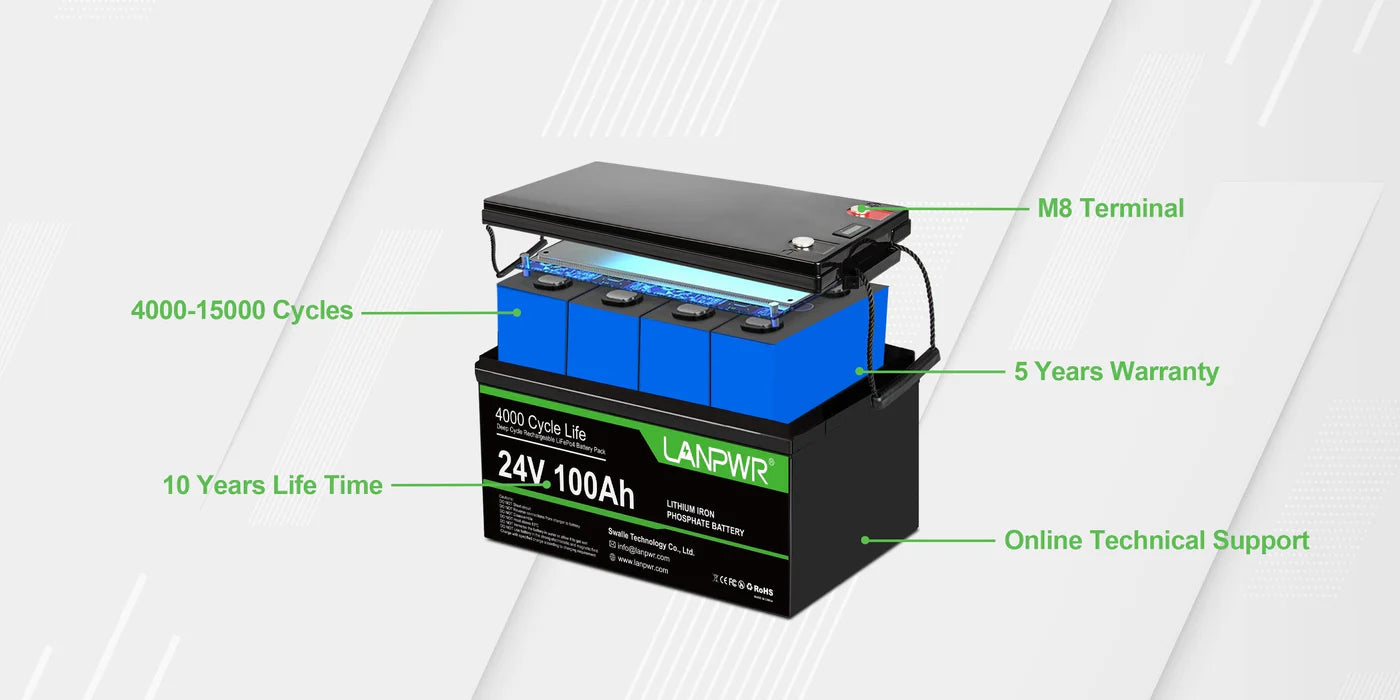LiFePO4 batteries have been widely accepted as safe, long-lasting, and stable in performance. Therefore, lithium iron phosphate or LiFePO4 batteries are not very well understood in this context. Yet, they have become a new subtype of popular lithium-ion batteries.
Understanding LiFePO4 Batteries
Lithium Iron Phosphate or LiFePO4 batteries are a new subtype of lithium-ion batteries that have become popular because they have several qualities and benefits. To understand these batteries, one needs to explore their chemistry, benefits, applications, and comparison with other types.
Chemistry of LiFePO4 Batteries
Main components of a LiFePO4 battery:
- Cathode: Lithium Iron Phosphate (LiFePO4)
- Anode: Graphite
- Electrolyte: Normally a lithium salt in an organic solvent
These special properties of LiFePO4 batteries are a result of the specific chemical composition.
Key Benefits of LiFePO4 Batteries
Safety
- Excellent Thermal Stability: The thermal and chemical stability of LiFePO4 batteries is excellent and hence, it does not easily become overheated or catch on fire, like other lithium-ion batteries.
- Non-toxic: The materials used in LiFePO4 batteries are environment-friendly and non-toxic, making them safer and easier for the disposal and recycling process long term.
Longevity
- Long Cycle Life: High-power LiFePO4 batteries usually have a cycle life so long that will for the most part outlive a 2,000 to 3,000 cycle life. According to some reports, they can even reach up to 5,000 cycles, only if managed properly.
- Slow Capacity Loss: The rate of capacity loss is low over time, which makes for long-lasting performance, longer than other lithium-ion batteries.
Stable Voltage
- Flat Discharge Curve: The voltage remains stable and flat during the whole discharge process. This means they can deliver constant power until they are almost fully discharged.
- High Energy Density: Fast Charge and Discharge: LiFePO4 batteries can be charged and discharged very quickly, making them suitable for high-power applications.
The Concept of Cycle Life
The cycle life of a battery is the measure of the number of complete charge and discharge cycles it can undergo before its capacity drops below a specific percentage of its original rating (usually 80%). For LiFePO4 batteries, this cycle life can be much longer than other lithium-ion chemistries, provided they are used and maintained correctly.
Discharging While Charging: What Does It Mean?
Discharging while charging is a process in which a battery is simultaneously being charged and providing power to a load. It can take place in several applications, such as:
- Uninterruptible Power Supplies (UPS): Any systems that need to run consistently, even during their charge cycle.
- Solar Energy Systems: Where the batteries charge from solar panels while powering devices.
- Electric Vehicles (EVs): When the battery is being charged through regenerative braking while supplying power to the motor.
Impact on Cycle Life
One of the biggest reasons why the discharge-while-charging feature can be a problem is due to higher heat generation. Charging and discharging both produce heat and if these occur in combination, a higher temperature can result within the battery. Too much heat can fast-track the rate of degradation within the battery's components, including both the electrolyte and the electrode materials, thereby reducing the overall life of the battery.
Charging and discharging show different directions of lithium-ion movement within the electrodes. In the charging process, lithium-ion movement is from the cathode to the anode. In the discharging process, the lithium ions reverse, moving back to the cathode. That increases the risks of simultaneous charging and discharging and causes some microstructural changes in the electrodes, resulting in wear and tear. This might lead to a decrease in the battery's cycle life.
- Overcharging and Deep Discharge Potential
The control systems that are needed for simultaneous charge and discharge have to be very sophisticated so that chances of overcharging or deep discharging the battery are not realized. Overcharging usually results in the growth of lithium dendrites that may eventually short the battery. Deep discharges can lead to a complete breakdown of the battery's internal structure. Both are dangerous to the life span of the battery.
Ways of Minimizing its Effects
The following are ways to reduce or minimize the effects of discharging while charging:
- Thermal Management: Introduce an effective cooling system, like heat sinks, which will help in the dissipation of heat to maintain low operating temperatures.
- Advanced BMS: Advanced battery management includes the monitoring and management of charge and discharge cycles; this will keep potential conditions that are likely to cause overcharging or deep discharge in check.
- Optimized Charging Protocols: Develop charging protocols that minimize the overlap of charging and discharging phases, reducing the stress on the battery.
Conclusion
From that previous analysis, it is therefore conclusive that discharging a LiFePO4 battery while charging it may decrease its cycle lifespan because of higher heat generation, electrode stress, and the risks of overcharging or deep discharge. However, if these aspects of impact are mitigated with appropriate thermal management, advanced BMS, and optimized charging protocols, the longevity of LiFePO4 batteries is assured, hence efficient and reliable performance over time.
Knowledge about these dynamics should be kept in mind by anybody relying on LiFePO4 batteries for critical applications, to ensure the best performance and lifespan from the investment.














Leave a comment
This site is protected by hCaptcha and the hCaptcha Privacy Policy and Terms of Service apply.